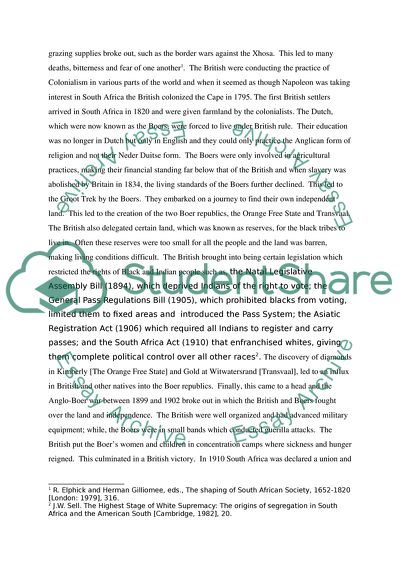Cite this document
(A Comparison of Apartheid in South Africa and Segregation in America Research Paper - 1, n.d.)
A Comparison of Apartheid in South Africa and Segregation in America Research Paper - 1. Retrieved from https://studentshare.org/politics/1749276-apartheid-in-south-africa-and-segregation-in-america-comparison
A Comparison of Apartheid in South Africa and Segregation in America Research Paper - 1. Retrieved from https://studentshare.org/politics/1749276-apartheid-in-south-africa-and-segregation-in-america-comparison
(A Comparison of Apartheid in South Africa and Segregation in America Research Paper - 1)
A Comparison of Apartheid in South Africa and Segregation in America Research Paper - 1. https://studentshare.org/politics/1749276-apartheid-in-south-africa-and-segregation-in-america-comparison.
A Comparison of Apartheid in South Africa and Segregation in America Research Paper - 1. https://studentshare.org/politics/1749276-apartheid-in-south-africa-and-segregation-in-america-comparison.
“A Comparison of Apartheid in South Africa and Segregation in America Research Paper - 1”, n.d. https://studentshare.org/politics/1749276-apartheid-in-south-africa-and-segregation-in-america-comparison.


